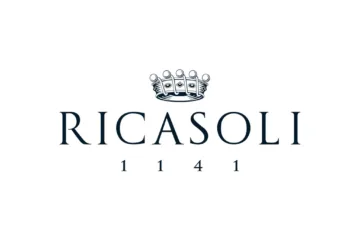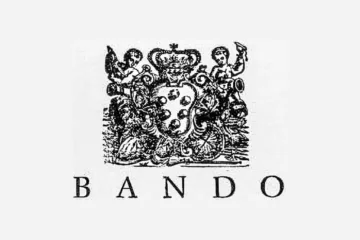
Wine is sold at auctions by lots, with the auctioneer serving as either the seller’s agent or, in certain cases, the seller themselves.
History of Wine Auctions
The wine trade has always included auctions as a crucial component. In ancient Rome, wine was sold through auctions. During the Middle Ages, wine was sometimes carried in barrels to be sold through auctions as well as private contracts, prior to purchasers visiting directly wine areas.
Wine auctions were held frequently in Britain in trading ports like Meith in Edinburgh (Scotland) where a bustling auction trade in quality Bordeaux wine casks is attested to by the presence of an auction room.
The 18th century saw the widespread adoption of the auction system for wine sales in Germany under the labels of village and vintage. In the 1830s, the Nassauer’sche Domäne in the Rheingau was one of the first to start instituting auction conditions for sales.
It was no longer necessary for producers to sell their wine at auction as wine trading grew more competitive due to better transportation and more advanced communications. Today’s commercial auction trade is centered around bottled wines at all stages of maturity, unlike the past when wine auctions were used to sell young or relatively young wine in barrel. Wine could be allowed to age and fully mature in bottles after it was first sealed with corks (these corks started to be used toward the end of the 17th century). Fine wine was given a literal breath of fresh air thanks to the introduction of these corks closure, lasting for decades and, in some cases, even a century or longer. This allowed it to surpass its prior reputation as a short-term commodity.
When wine could be passed down through the generations, collectors, investors, and enthusiasts soon followed. When wines have reached their best, it may be appreciated with the same respect as a piece of art or any other traditional auction room collectible. Captured wine in a bottle gave rise to a market for old wines whose reputation, determined by name and vintage. Throughout time, this market has established a quantifiable value scale for the most famous wines and producers.
Christie’s & Sotheby’s move to Wine Auctions
Prior to the establishment of wine divisions at the two most prominent auction houses globally, wine sales were often conducted as a component of house sales. In order to expand the department and satisfy the needs of a more discerning and specialized global clientele, Christie’s hired Michael Broadbent from Bristol wine retailer Harveys in 1966, marking the beginning of the department’s existence. On October 2, 1966, the inaugural auction of the new era took place; sales for the first season totaled £220 634.
Not to be outdone, Sotheby’s entered the race in 1970 and held its inaugural auction in Glasgow on September 16, 1970, through its newly formed department dedicated to wine.
For many years, Christie’s and Sotheby’s controlled the wine auction market, but new players and auction platforms have put the established order under pressure. ‘Silent bid’ wine auctions were first launched and made popular in the United States in the late 1970s by The Chicago Wine Company.
It wasn’t until the late 1980s that wine auctions began to grow in one of the most valuable markets in the world due to antiquated restrictions in New York state.
Prior to deregulation in the late 1990s, Christie’s and Sotheby’s collaborated with regional wine retailers.
The 1980s saw inefficiencies in the market of selling wine through auction, which also made specialized wine brokers like Farr Vintners and others in the UK more competitive. Electronic-wine-auction businesses were born out of the doc.com boom of the late 1990s. Established in 1996, WineBid.com, a US-based company, created a global network but closed its operations in the UK, Australia, and Europe due to organizational problems and fierce competition.
Many wine auction organizations have embraced the electronic auction model, and the secondary wine market is now more competitive thanks to the efforts of Uvine and Liv-ex, two electronic wine exchange companies.

Most Famous Annual Wine Auctions
The Hospices de Beaune Wine Auction: the most famous of all
The sale of wines made from vineyards bequeathed over the years to the Hospices de Beaune, a former medieval hospice in Burgundy, France, provides a significant amount of funding for the hospital that is attached to it today. The Hospices host a yearly charity auction every third Sunday in November, which is followed by a long weekend of extravagant celebration and feasting. Lots named after the Hospices donors, each consisting of many 228-liter barrels, are auctioned off at the traditional candle sale.
The auction is special because it provides a public forum for the Beaune negociants to show off their generosity and value their reputation, but it is debatable if this makes it a reliable indicator of the market price for the upcoming Burgundy vintage.
Many modern imitators, from Limoux to California, have been inspired by the Hospices de Beaune auction’s success in mixing the sale of wines with media attention.
Kloster Eberbach another historical wine auction
Die Glorreichen Tage, a three-day extravaganza with the traditional yearly auction of German wines at its center, were launched in 1987 by the Chart Group of Riesling producers, who merged with the VDP in 1999. This event takes place at the Cistercian abbey ‘Kloster Eberbach‘, in the heart of Germany’s Rheingau region.
The Nederburg auction
Nederburg, in South Africa, improved its standing as a producer of fine wines when it started holding, in 1975, the Nederburg auction, when a number of its best bottlings as well as those of other producers, are put up for sale.
The Cape Winemakers’ Guild, an association of mostly independent cellarmasters that began auctioning off small lots of premium wines in 1985, was inspired by this Nederburg sale.

History of Wine Auction in the United States
In 1969, Heublein, a distillery, held the first-ever New World wine auction in Chicago. Since then, there has been a rise in charity wine auctions in the US, spearheaded by the now-famous annual Napa Valley Wine Auction and, later, the Naples Winter Wine Festival in Florida. These successes are also due to the mix of stringent licensing rules and tax incentives for buyers.
The prices paid at these charity events are frequently so inflated by buyers’ generosity and ostentatious wealth that they cannot be compared to the rapidly expanding commercial auctions in the United States as accurate indications of the market.
The Wine Auction Trade Structure
Customers at wine auctions are primarily divided into two groups: the wine trade and private individuals, who make up the majority of vendors and buyers. Private purchasers of wine may purchase it for a variety of reasons. They could be investors, collectors, or customers. In addition, trade buyers purchase items to invest in, cover voids in a restaurant’s or retailer’s wine list, or act as brokers for individual or trade clients.
While there are many different reasons to sell wine, the most common ones are debt, divorce, and death. Private sellers can also potentially wish to sell in order to finance additional wine purchases or to realize the worth of their cellar.
On the other side, professionals in the wine trade may wish to sell in order to fund investments, get rid of excess inventory, or getting rid of stock coming from bankrupt.
Understanding the Auction Catalogue
The auction catalogue, which includes information on the lots, estimated prices, terms of sale, and a host of other extras like fill levels, bottling details, delivery costs, premiums, additional taxes, and excise duties. It gathers all the information needed for a specific auction.
The online auction model offers enhanced catalogs by giving prospective purchasers direct access to details about the vintage, the area, and tasting comments.
Due to the significance of the wine’s condition, particularly for older wines (remember that these are typically not accessible for public or prospective buyer inspection before the auction), the catalogue typically states:
- The exact ullage level (filling level), in general indicated in reference of the neck of the bottle (for example: mid shoulder or bottom neck…
- The condition of the label
- Is the wine provided with it own wooden case
- The condition and reputation of the cellar for keeping these kind of wines (sometimes called the cellar pedigree)

The Auction Lots
There are numbered lots containing the wines that will be sold. Each lot is identified by name, bottle size, and vintages in the description, in addition to a number and an anticipated price range from lowest to highest.
In order to safeguard the bidder and its own reputation, the more respectable the auction company, the more measures it takes to ensure the provenance of each wine in a particular lot.
Auction houses and their specific policies
Depending on the state of the wine to be sold and the inspection, the auction house policy may change. Christie’s traditionally opens the original wooden cases, while Sotheby’s doesn’t unless the wines are very young.
There may occasionally be pre-sale sampling (for analysis and tasting by experts). For some lots, this may be very interesting if the auctioneer’s tasting notes are added.
The Bidding Process in Wine Auctions
To attend wine auctions, particularly those held in renowned auction houses, prospective purchasers must register. This is the rationale behind the widespread use of registered professionals as middlemen by private clients.
To get the auctioneer’s attention, you can wave your hand or a numbered paddle to place a bid. The lot is awarded to the winning bidders one increment ahead of the losing bidder. If there are two commission bids with the same amount, the first one received is the one that counts.
It is noteworthy that many of the lots are sold without being presented in the saleroom, because of the strong demand for fine wines throughout the world.

Follow me on my Social Media
Wine is a gourmet treasure, do not abuse alcohol!
None of this content has been sponsored
I did not receive any gifts or free samples that could be related to this article


